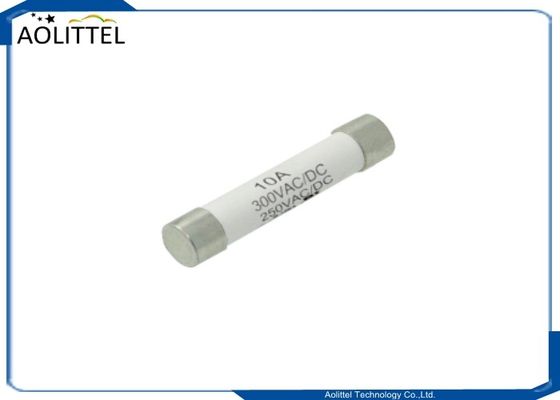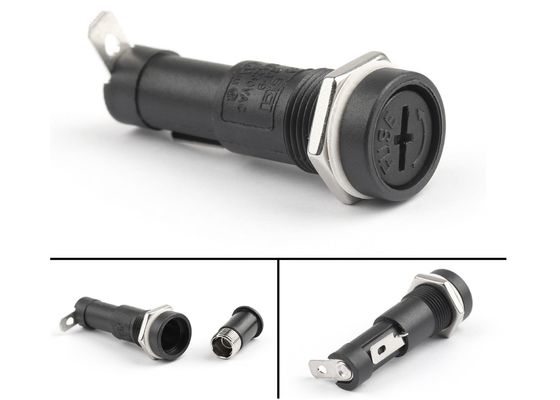Low Voltage Bayonet Horizontal R3-9 Panel Mount Type Fuse Holder 15A 250V For 6x30mm Ceramic Fuse Glass Fuse
Specification
Fuse Size : Ø6.35x30mm / Ø6.35x31.75mm
Maximum Rating :15A 250V AC
Dielectric Strength : AC 1500V 1 Minute
Insulation Resistance : DC 500V 100mΩ Min.
Contact Resistance : 50mΩ Max
Approvals : CE, CQC, UL,VDE

Dimension (mm)



Other Parameters
| Product Name |
PCB Fuse Holder |
| P/N |
R3-9 |
| Voltage breakdown |
AC2500 1minute |
| Insulation resistance |
DC 500V 100MΩ |
| Rating Values |
15A 250VAC |
| Temperature range |
-20℃ -150 ℃ |
| Flammability class |
UL94V0 |
| Standard |
IEC-60335-1 GB_9364.6-2001 |
| Certification |
ISO9001, ROHS, |
| Mounting |
PCB Mount |
| Material |
Thermosetting glue, Brass |
| International Approvals |
CE, CQC, UL,VDE |
| Fuse size |
5*20mm Glass Fuse,6x30mm Ceramic Fuse |
| Application |
It is suitable for panel installation of all electrical and electronic equipment, testing equipment and sound equipment. |
Replacing a Glass Tube Fuse
These fuses will again need a fuse puller unless the ends are very accessible and can be reached with a screwdriver to pry them out. Use of pliers will almost inevitably result in a broken fuse, with broken glass scattered throughout the fuse box.
Grasp the fuse in the center with the fuse puller and pull the entire fuse out. Insert the new fuse into the fuse puller and push it into place in the clamps using the tool. It is often easier to use the fuse puller on these small fuse than fingers
Changing a Cartridge Fuse
This is a little more difficult as removing the old fuse isn't quite so easy. A fuse puller is extremely handy here and are quite inexpensive. Examples of some fuse pullers are shown above, available from either Amazon or eBay.
If there is any question that power is still on at the fuse, check with a non contact voltage detector or voltmeter before proceeding. Do not attempt to remove a cartridge fuse that is still has power to it!
If a fuse puller is available, grasp the fuse near the center with the puller and pull the fuse straight out of the clips holding it. If you have waited too long to buy a fuse puller, these fuses can often be removed by prying with a screwdriver or using pliers, but be aware that squeezing too hard will crush the fuse and shatter a glass tube fuse.
Holding the replacement fuse in place, push the bottom end into the clips. A hammer handle can be used for large fuses or other tool for smaller ones if finger pressure won't do the job. Be sure to press hard on only the metal ends as the fuse can be broken by pressing hard in the center. If the fuse has a groove on one end, make sure it is not upside down as it will not fit the spring clamps if it is. With one end fitted into the clamps, push the top end in as well. The fuse should be centered as well as possible in the clamps, without having one end protruding; many clamps will not accept a fuse that isn't aligned properly.

 Your message must be between 20-3,000 characters!
Your message must be between 20-3,000 characters! Please check your E-mail!
Please check your E-mail!  Your message must be between 20-3,000 characters!
Your message must be between 20-3,000 characters! Please check your E-mail!
Please check your E-mail! 














